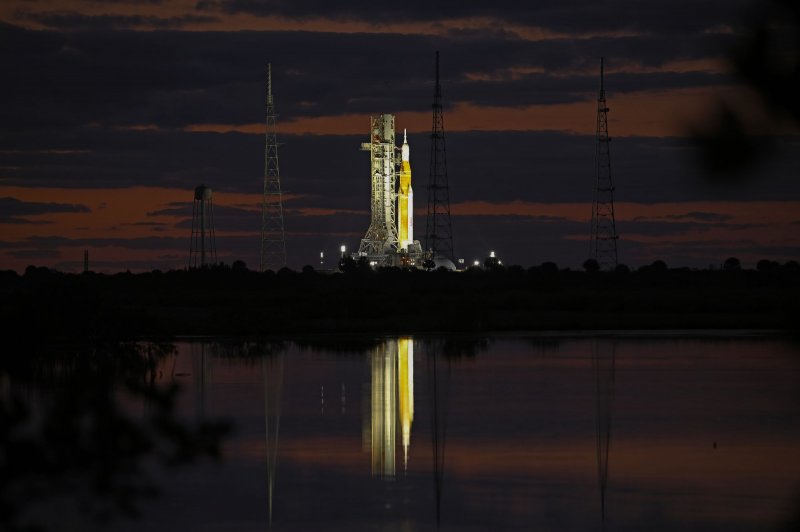ORLANDO, Fla., April 18 (UPI) — The launch of NASA’s new moon rocket has been pushed back by nearly a month after the Space Launch System failed to complete necessary prelaunch testing, officials said on Monday.
Estimated to blast off sometime between June 6 through 16, NASA officials said that launching during that window would now be challenging after issues during the SLS’s wet dress rehearsal prevented teams from finishing their system tests.
“I think that at this point, making the June launch window will be a bit of a challenge, with all the work we have to do,” Tom Whitmeyer, deputy associate administrator for common exploration systems development at NASA, told UPI in an interview.
“The next launch opportunity runs from June 29 to July 9,” Whitmeyer said.
The agency said its teams will stand down from a planned test the SLS and roll it back to the Vehicle Assembly Building to troubleshoot hardware issues that thwarted planned prelaunch testing.
The behemoth will begin its roll back to the VAB next week, on April 26.
NASA teams plan replace a faulty upper stage check valve, as well as address a nitrogen issue that cropped up on the vehicle during one of its attempts to practice launch day procedures during the wet dress rehearsal.
NASA plans to return to the moon with the help of SLS, a heavy-lift rocket that’s been in development for more than a decade and so far has cost the agency $30 billion.
The rocket is currently preparing for its maiden flight, called Artemis-1, which will see it fly around the moon.
The mission is meant to provide data on how the craft’s systems work in order to prepare for the ultimate goal of its lunar program — boots on the moon.
Ahead of long term plans, NASA rolled the massive rocket to the launch pad on March 17 to start testing rocket’s systems, including loading the vehicle with fuel. NASA’s hope for the wet dress was that by running through the complex procedures ahead of time, the actual launch countdown would proceed fairly smoothly.
The agency tried, unsuccessfully, to run through all of its planned milestone but hit into several issues, including a faulty check valve in the rocket’s upper stage helium tanks.
NASA made three attempts over the course of two weeks, but each was affected by some sort of glitch — either with the rocket, the mobile launch platform or the ground system equipment that supplies the rocket with fuel.
Progress was made during the most recent attempt on April 14, with teams partially filling the liquid oxygen tanks and loading a miniscule amount of liquid hydrogen before having to stop the test.
As a result, the most dynamic portion of the test, pressurization and terminal countdown — the moment before the rocket’s engines would ignite in a real launch — was not reached.
Additionally, NASA said that there is an issue with its gaseous nitrogen supplier, Air Liquide, and that both the agency and its contractors will need to do some upgrades and troubleshooting.
SLS requires more gaseous nitrogen, which is used to purge its fuel tanks, than most rockets due to its size. Air Liquide will need to upgrade its facilities at Kennedy Space Center to support the vehicle, officials said.
Over the next several weeks, NASA will replace the faulty valve and repair a leak on the mobile launch tower’s “tail service umbilical,” which is a 10-meter-tall structure that supplies propellant and electricity to the rocket while it’s on the launch pad.
“We will go back out and we are absolutely going to do another wet dress rehearsal,” Whitmeyer says. “The exact timing needs to be determined.”
Charlie Blackwell-Thompson, the mission’s launch director, says that the next steps will be decided as the week progresses, but could include a few different scenarios.
“It could take a few or several weeks to make the necessary repairs,” she said Monday during teleconference for reporters.
“We will know a more exact time frame later in the week,” Blackwell-Thompson said.

